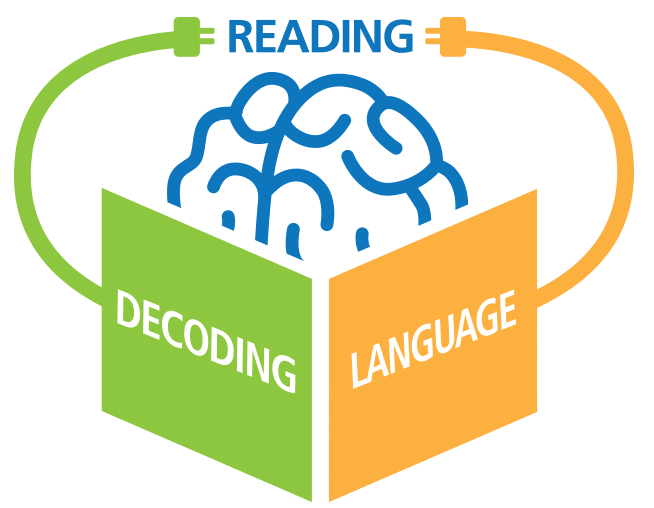[vc_row][vc_column][vc_column_text]
CUBED Assessment Overview

The CUBED is a family of screening and progress monitoring tools that accurately, reliably, and efficiently measure language comprehension, decoding, and their product, reading.
 The CUBED is primarily designed to be a criterion-referenced universal screening and progress monitoring assessment. It can also be used as a norm-referenced assessment. The CUBED can validly, reliably, and efficiently measure the constructs of decoding and language comprehension, and their product, reading for students in preschool through third grade. The results of the CUBED can directly inform instruction and provide information on a student’s modifiability and zone of proximal development. The assessments were designed specifically for preschool through third grade students, but when used as a criterion-referenced assessment, older students can also be administered the CUBED. Two major constructs are measured with the CUBED: language and decoding.
The CUBED is primarily designed to be a criterion-referenced universal screening and progress monitoring assessment. It can also be used as a norm-referenced assessment. The CUBED can validly, reliably, and efficiently measure the constructs of decoding and language comprehension, and their product, reading for students in preschool through third grade. The results of the CUBED can directly inform instruction and provide information on a student’s modifiability and zone of proximal development. The assessments were designed specifically for preschool through third grade students, but when used as a criterion-referenced assessment, older students can also be administered the CUBED. Two major constructs are measured with the CUBED: language and decoding.
There are two main subtests of the CUBED – the Narrative Language Measures and the Dynamic Decoding Measures, which together measure 18 targets so you can capture the FULL picture of your student’s literacy!
Narrative Language Measures (NLM)
Language comprehension, decoding fluency, and reading comprehension are assessed using the Narrative Language Measures (NLM). The NLM is comprised of two measures: the NLM Listening and the NLM Reading. Additional sections assess expressive oral language through personal story generation, and written language through personal story writing—all in the context of narration.
 Results of the NLM Listening provide clear information on how well a student can understand an oral narrative, produce story grammar and includeimportant language complexity features, produce or approximate a complete episode, answer questions about the story, answer inferential vocabulary questions, and independently generate an oral story.
Results of the NLM Listening provide clear information on how well a student can understand an oral narrative, produce story grammar and includeimportant language complexity features, produce or approximate a complete episode, answer questions about the story, answer inferential vocabulary questions, and independently generate an oral story.- Results of the NLM Reading provide clear information on reading fluency and decoding errors. Using a reading retell format, comprehension can be measured. A student’s ability to answer questions about the story, define less common words, and independently write a personal story can be documented.
Dynamic Decoding Measures (DDM)
Decoding is assessed using the Dynamic Decoding Measures (DDM). The DDM is comprised of three measures: Phonemic Awareness, Word Identification, and Decoding. Each measure assesses a specific skill related to or reflective of decoding. Within each measure a dynamic assessment that either uses a ‘testing the limits’ or ‘test-teach-retest’ approach is used with three different targets that provide specific information on a student’s strengths and weaknesses. Students are typically administered the more difficult or more mature targets first, and then subsequent targets are assessed until a student’s current level of performance is identified.
- Results of the DDM provide clear information on what a student can currently do, what a student needs to learn, and how ready and responsive the student will be to learning the next level of material for phonemic awareness, letter names, letter sounds, irregular words, and decoding CVC, CCVC, and silent ‘e ’ words.
The CUBED measures:
- are quick and efficient to administer and score;
- serve as universal screening (or benchmark assessment) and progress monitoring measures;
- identify students in need of more intensive decoding, language, decoding fluency, or writing intervention;
- evaluate the effectiveness of interventions; and
- play an integral role in a multi-tiered system of support focusing on both decoding and language.
Purposes of the CUBED:
- Benchmark screening
- Progress monitoring
- Identification of students performing significantly below peers
- Intervention planning
Why focus on language? Expand your focus beyond decoding and get the full picture!
 It’s an unfortunate fact; most students in the U.S. do not understand grade level reading material. To battle this, there has been a primary focus on students’ decoding abilities. This is only part of the picture and an emphasis on decoding alone will not result in the desired reading outcomes. True reading is the product of decoding and language. Informed by extensive empirical research, the CUBED represents advancements in language assessment that help educators measure all of the critical dimensions of literacy, including phonemic awareness, word identification, decoding, decoding fluency, listening comprehension, reading comprehension, expressive language, and writing. Because reading comprehension and listening comprehension reflect the same construct of language, the CUBED can assess reading comprehension of young students even before they have learned to decode. The CUBED measures are highly efficient and provide in-depth information about intervention targets while maintaining validity and reliability standards.
It’s an unfortunate fact; most students in the U.S. do not understand grade level reading material. To battle this, there has been a primary focus on students’ decoding abilities. This is only part of the picture and an emphasis on decoding alone will not result in the desired reading outcomes. True reading is the product of decoding and language. Informed by extensive empirical research, the CUBED represents advancements in language assessment that help educators measure all of the critical dimensions of literacy, including phonemic awareness, word identification, decoding, decoding fluency, listening comprehension, reading comprehension, expressive language, and writing. Because reading comprehension and listening comprehension reflect the same construct of language, the CUBED can assess reading comprehension of young students even before they have learned to decode. The CUBED measures are highly efficient and provide in-depth information about intervention targets while maintaining validity and reliability standards.
Most curriculum-based measures do not directly inform instruction, but the CUBED has been carefully engineered to do just that. Of course, the CUBED is not a comprehensive assessment and does not measure everything needed for academic success. However, the concepts, and in some cases even the specific information (e.g., irregular words) can be directly taught to students. The relationship between student performance on the CUBED assessment and instruction/intervention is remarkably clear. Once students have been identified as needing more intensive intervention, the same information should be used to organize students into groups according to individualized intervention needs. The CUBED Insight system facilitates this process.
[/vc_column_text][/vc_column][/vc_row]
